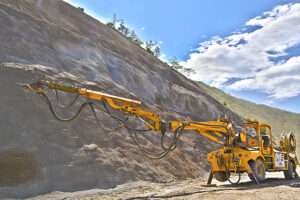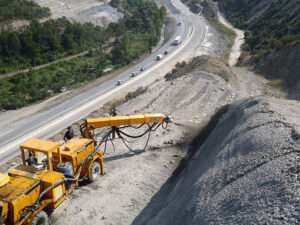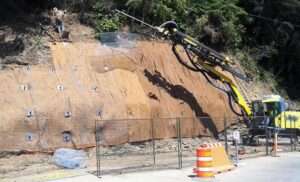As our infrastructure continues to age and the impacts of climate change become more pronounced, the need to reinforce and protect our built environment has never been more critical. One technique that’s proven itself time and again in this pursuit is the use of shotcrete for slope stabilization. This article will delve into the world of shotcrete, exploring its benefits, applications, and why it’s become a go-to solution for reinforcing infrastructure and stabilizing slopes.
What is Shotcrete?
Shotcrete is a type of concrete that’s pneumatically applied at high velocity onto a surface. This process involves mixing cement, aggregate, and water, then spraying the mixture through a hose using compressed air. The result is a dense, durable layer of concrete that adheres tightly to the substrate.
How Does Shotcrete Reinforce Infrastructure and Stabilize Slopes?
Shotcrete plays a dual role in infrastructure reinforcement and slope stabilization. Firstly, it acts as a protective coating, shielding the underlying rock or soil from erosion and weathering. Secondly, when reinforced with fibers or mesh, shotcrete adds significant structural strength, helping to prevent slope failures and rockfalls.
The process of applying shotcrete typically involves the following steps:
- Preparation: The slope or rock face is cleaned and prepared to ensure a strong bond between the shotcrete and the substrate.
- Application: The shotcrete mixture is pneumatically applied to the surface, building up a layer of the desired thickness.
- Reinforcement: If required, reinforcing mesh or fibers are embedded into the wet shotcrete to add additional strength.
- Finishing: The shotcrete is finished to the desired texture and appearance.
Why is Shotcrete Ideal for Infrastructure Reinforcement and Slope Stabilization?
Shotcrete offers several advantages that make it an ideal choice for reinforcing infrastructure and stabilizing slopes. These include:
- High Strength: Shotcrete can achieve compressive strengths of over 10,000 psi, making it a highly durable protective coating.
- Adhesion: The high-velocity application process ensures a strong bond between the shotcrete and the substrate, resisting delamination.
- Flexibility: Shotcrete can be applied to complex geometries and irregular surfaces with ease.
- Speed: The shotcrete process allows for rapid application, minimizing project timelines and disruptions.
- Cost-Effectiveness: Compared to other reinforcement methods, shotcrete is often more economical.
Real-World Applications of Shotcrete in Slope Stabilization
Shotcrete is used in a vast array of applications where slope stability is paramount. These include:
- Highway and Railway Cut Slopes: Shotcrete helps prevent rockfalls and landslides that could impact traffic.
- Dam and Levee Faces: It provides a durable layer of protection and reinforcement for critical water infrastructure.
- Residential and Commercial Developments: Shotcrete is used to stabilize slopes and prevent landslides in areas of development.
- Environmental Restoration: It’s used to stabilize and rehabilitate degraded or eroded slopes in environmentally sensitive areas.
Challenges and Considerations
While shotcrete is a powerful tool, it’s not without its challenges. These include:
- Quality Control: Ensuring consistent mix quality and application technique is critical for achieving optimal results.
- Environmental Factors: Weather conditions, substrate properties, and drainage all impact the performance of shotcrete.
- Durability: While highly durable, shotcrete is not immune to degradation over time and requires regular inspection and maintenance.
- Aesthetics: Shotcrete can have a grey, concrete-like appearance that may not blend with natural surroundings.
Innovations in Shotcrete Technology
The world of shotcrete is continually evolving, with new innovations and advancements improving its performance and applicability. These include:
- Fiber Reinforcement: The use of synthetic and steel fibers is becoming increasingly popular, offering improved tensile strength and durability.
- Specialized Mix Designs: New mix designs are being developed to improve shotcrete’s resistance to freeze-thaw, sulfates, and other forms of degradation.
- Spraying Technologies: Advances in spraying equipment are allowing for greater control over the application process, improving quality and efficiency.
Conclusion
Shotcrete has proven itself as a highly effective technique for reinforcing infrastructure and stabilizing slopes. Its unique combination of high strength, strong adhesion, and rapid application make it a go-to solution for engineers and contractors. As the demands of infrastructure projects continue to grow and the impacts of climate change intensify, the role of shotcrete in protecting and stabilizing our built environment will only become more crucial. By embracing new innovations and best practices, we can unlock the full potential of shotcrete and build a more resilient future.







